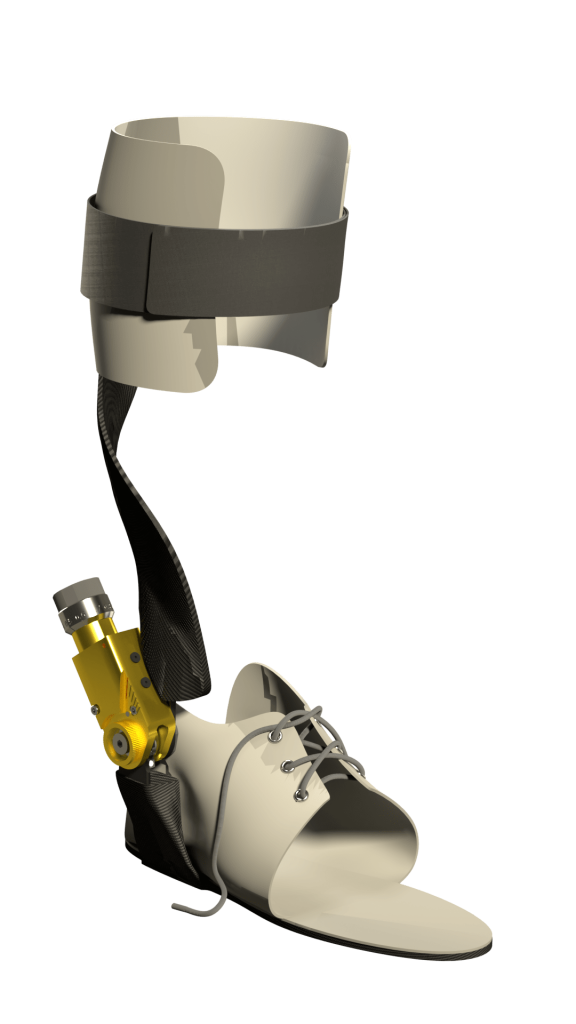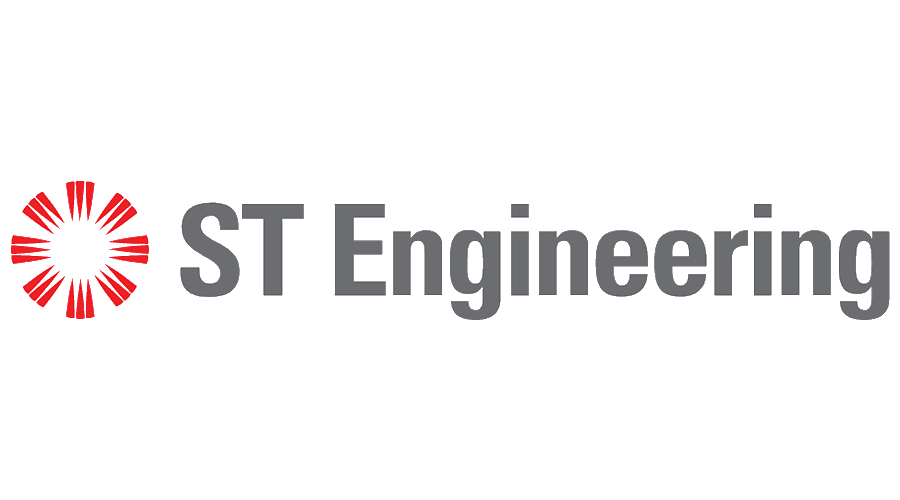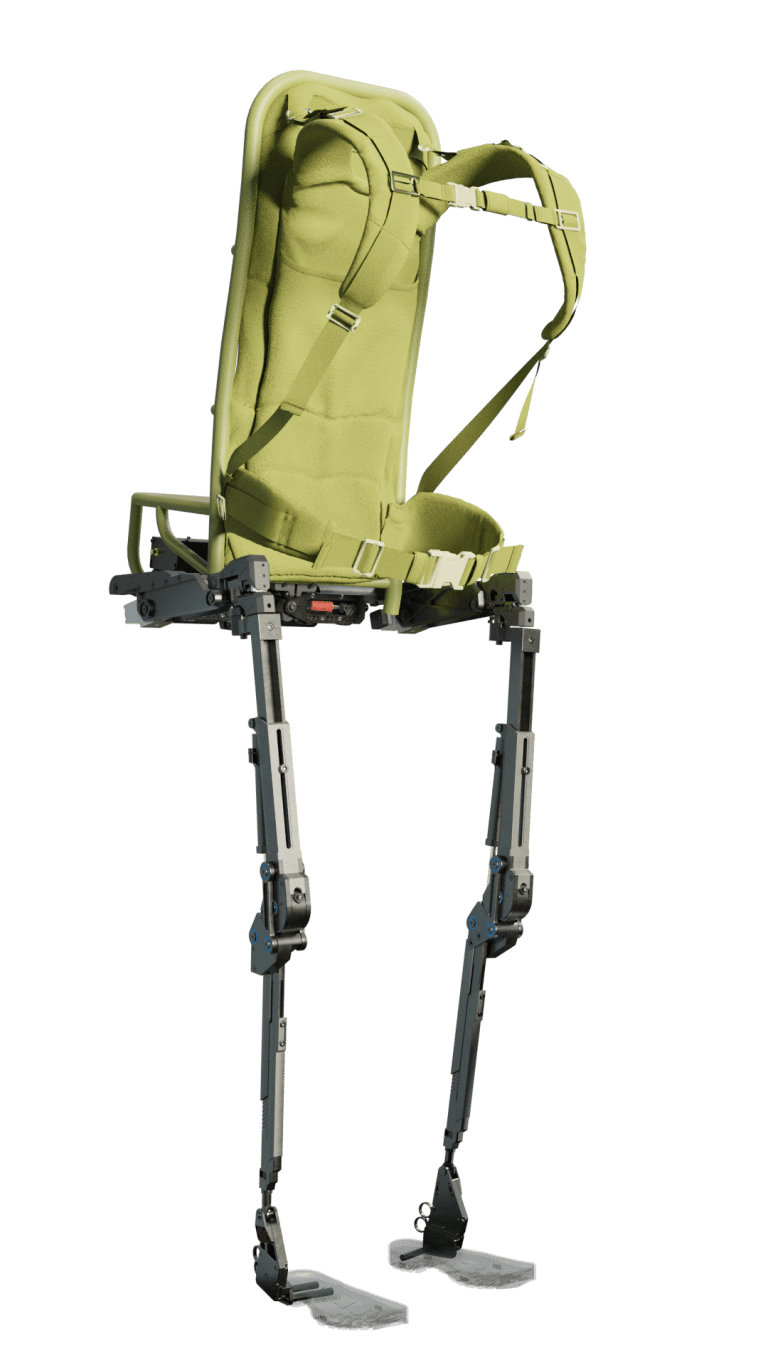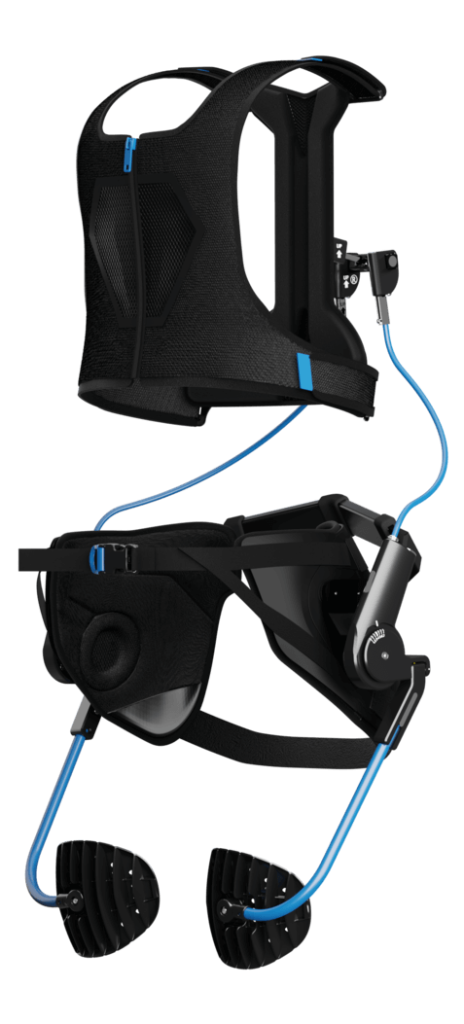STEP BY STEP GAIT IMPROVEMENT //
Our ankle orthosis the hermes

the ankle orthosis for rehabilitation and mobility
The Hermes is an advanced ankle orthosis with a unique spring system that can generate freely designed angle-moment relations about the ankle. Generating negative stiffnesses can counterbalance the bodies own spasms giving the patient regained control of their foot, enhancing mobility in day to day life and allowing for continous rehabilitation during use.
features
LIGHT
WEIGHT
At 350gr the Hermes allows rehabilitation through going about your daily activities.
modular approach
INCREASED MOBILITY
Allowing patients to move freely and effortlessly by integrating with all low cut shoes.
Faster
recovery
By using the adaptabilityof the Hermes, users can follow the fastest rehabilitation curve, optimal for each individual patient.
Keep it light //
How the ankle orthosis works
Plantarflexor spasticity in combination with dorsiflexor paresis cause equinus or equinovarus foot affecting safe mobility. Conventional ankle-foot orthoses (AFOs) are stiff, and support mobility by attaining foot clearance during swing, but at the cost of ankle motion, push off during gait, and activities requiring a mobile ankle, like dressing and car-driving.
Together with a consortium of research partners, InteSpring developed a novel negative stiffness AFO, called Hermes, to compensate for the spastic ankle joint stiffness, enabling the available dorsiflexor muscles to regain control.

Plan an expert seminar on exoskeletons, human augmentation and injury prevention
CUSTOM MADE HERMES AVAILABLE
no limitations //
rewalk exoskeleton for home use
The Hermes is a personalized demonstrator prototype for home use, that allows tuning to a range of patients’ needs. For home use, the hinge is designed for safety and durability (covering rotating parts) and accommodates individual patients’ needs using personalized torque-angle characteristics.
With cross-sectional patient studies in lab setting currently underway, a “Validate and Transfer II” enables longitudinal studies with home use.
Improved ankle mobility reduces complications of spastic paresis (e.g., contractures, high energy expenditure), allows renewed muscular control, and secondarily lowers the limitations in activities, enhancing quality of life.






